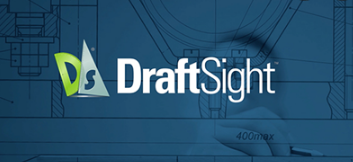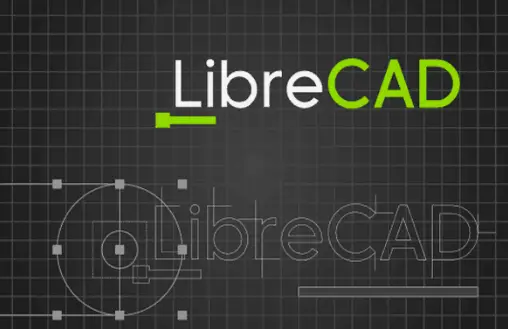Advantages and disadvantages of CAD
CAD, or computer-aided design, is a technology that allows designers to create two-dimensional and three-dimensional models of physical objects on a computer. CAD has been used in a variety of industries, including architecture, engineering, and manufacturing, to create everything from office buildings to automobiles. There are several advantages to using CAD. First, it allows designers to create models of objects that can be viewed from any angle, which is helpful for visualizing how a product will look before it is built. Second, CAD can be used to create prototypes of products, which can be tested for functionality and durability before mass production begins. Finally, CAD can be used to create detailed instructions for manufacturing, which can help to streamline the production process. There are also some disadvantages to using CAD. First, it can be expensive to purchase the software and hardware needed to run CAD programs. Second, it can take some time to learn how to use CAD effectively. Finally, CAD files can be large and complex, which can make them difficult to share with others.
What are the advantages and disadvantages of CAD?
CAD, or computer-aided design, is a technology that allows designers to create and edit digital models of physical objects. CAD has many advantages over traditional methods of design, such as pencil and paper. CAD models can be easily shared with other members of a design team, and changes can be made quickly and easily. CAD also allows designers to create realistic simulations of how an object will look and function in the real world. However, CAD also has some disadvantages. CAD software can be expensive, and it requires a significant amount of training to use effectively. Additionally, CAD models can be very complex, making them difficult to understand for non-experts.
What are 5 Advantages of CAD?
1. Increased Productivity: CAD software enables engineers and architects to create designs much faster than if they were drawing by hand. This increased speed allows for more design iterations and a greater level of detail.
2. Greater Accuracy: CAD software provides the ability to create highly accurate designs. This is due to the fact that the software can take into account factors such as material thickness and tolerances.
3. Improved Communication: CAD software allows for easy sharing of designs with colleagues and clients. This is because the software creates files that can be easily emailed or uploaded to a server.
4. Enhanced Visualization: CAD software provides the ability to create realistic 3D models of designs. This allows for a better understanding of the design and can help to identify potential problems.
5. Increased Flexibility: CAD software provides a great deal of flexibility when it comes to creating designs. This is because the software can be easily customized to suit the specific needs of the user.
What are the advantages and disadvantages of CAD and CAM?
CAD (Computer Aided Design) and CAM (Computer Aided Manufacturing) are both computer-based technologies that have revolutionized the manufacturing process. CAD is used to create digital models of products, which can be used to create detailed blueprints for manufacturing. CAM is used to control manufacturing equipment, such as lathes and mills, to create products from the CAD models. There are several advantages to using CAD and CAM in manufacturing. First, it allows for a greater degree of accuracy and precision in the manufacturing process.
Second, it can be used to create complex designs that would be difficult or impossible to create using traditional methods. Third, it can be used to create virtual prototypes of products, which can be tested and refined before manufacturing begins. There are also some disadvantages to using CAD and CAM. First, it requires a significant investment in computer hardware and software. Second, it requires trained personnel to operate the equipment. Third, it can be difficult to change or modify designs once they have been created.
What is CAD and its advantages?
CAD is an acronym for “computer-aided design.” CAD is a type of software used by engineers, architects, and other professionals to create two-dimensional and three-dimensional models of physical objects. CAD software is used to increase the productivity of the designer, improve the quality of design, improve communications through documentation, and to create a database for manufacturing. CAD output is often in the form of electronic files for print, machining, or other manufacturing operations.
The main advantage of CAD is that it can save a lot of time in the design process. CAD can be used to create models and drawings that can be easily modified. This means that changes can be made quickly and easily, without having to redraw the entire design. CAD also makes it easy to create accurate models and drawings. This is because CAD software can automatically generate dimensions and measurements. Another advantage of CAD is that it can be used to create realistic images of the finished product. This is because CAD software can create 3D models.
These models can then be rendered to create realistic images. This can be helpful in the marketing and selling of products. CAD also has some disadvantages. One disadvantage is that CAD software can be expensive. Another disadvantage is that it can be difficult to learn how to use CAD software.
What are the advantages of computer aided engineering?
There are many advantages of computer aided engineering (CAE). CAE enables engineers to create and analyze designs much faster and more accurately than they could with pencil and paper. This means that engineers can explore more design options and find the best possible design much more quickly. CAE also allows engineers to test their designs before they are built. This can save a lot of time and money, as it is much cheaper and easier to make changes to a design on a computer than it is to build a prototype and then test it. Finally, CAE provides a way for engineers to share their designs with others. This can be very helpful when working on a team, as it allows all members of the team to see the same design and make comments or suggestions.
What are the advantages and disadvantages of manual drafting?
There are both advantages and disadvantages to manual drafting. On the plus side, manual drafting gives the drafter a great deal of control. They can make changes easily and experiment with different options. Manual drafting is also a very portable skill – all you need is a pencil and paper. On the downside, manual drafting can be very time-consuming, and it can be difficult to achieve precision.
What are the disadvantages of Computer-Aided Manufacturing?
There are several disadvantages of Computer-Aided Manufacturing (CAM). First, CAM can be expensive to implement. The hardware and software required for CAM can be costly, and there may also be training costs associated with using the system. Second, CAM can be complex to use. The software required for CAM can be difficult to learn and use, and the system may require frequent maintenance and updates.
Third, CAM can be inflexible. Once a CAM system is in place, it can be difficult to make changes to the system or to the manufacturing process. This can lead to delays and disruptions in the manufacturing process. Fourth, CAM can be unreliable. The software and hardware required for CAM can be susceptible to errors and malfunctions. This can lead to production delays and disruptions. Overall, the disadvantages of CAM can outweigh the advantages. However, CAM can be a valuable tool for manufacturing if it is used correctly and if the benefits outweigh the costs.
What are the advantages of using CAD over manual drawing?
There are many advantages of using CAD over manual drawing. CAD allows for a more accurate representation of the object being drawn as well as a more efficient design process. CAD also allows for the easy creation of three-dimensional models and the ability to view the model from any angle. Additionally, CAD files can be easily shared with others and edited as needed.






